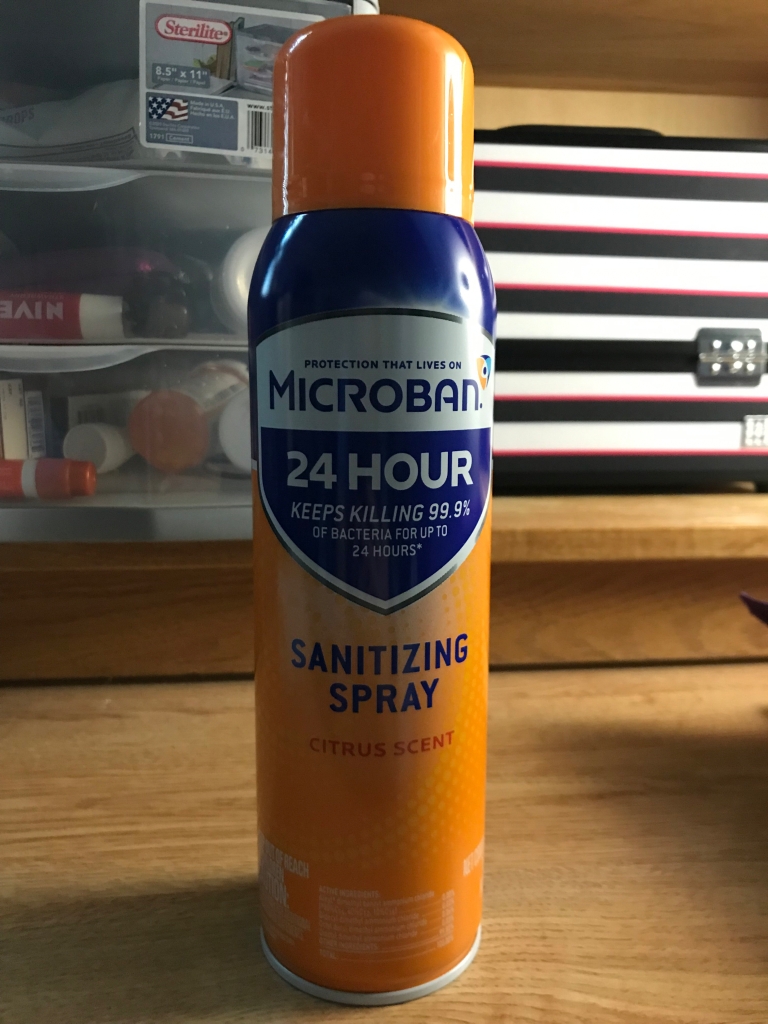
I got the disinfectant spray, Microban (the sanitizing spray that has a citrus scent) at Walmart for $5.94. The microbial chemical in Microban is the broad spectrum use of zinc. Compared to other microbials such as silver and copper, zinc based microbials are not just effective against bacteria, but also the growth of fungi including mold, mildew and algae. On the back of the spray can, it states as a precaution statement that it is a hazard to humans and animals. It also says caution: avoid contact with skin or clothing. However, after doing some research, assessments have confirmed that Microban antimicrobial additives are safe to use and depending on the level of exposure are not harmful to human health. According to this product, I have been mainly sanitizing by spraying until thoroughly wet, let it stand for 10 seconds and I wipe the surface clean (this is for hard non-porous non- food contact surfaces).
According to Old House To New Home, in order to make my own anti-microbial cleaning product, I would need to mix “together 3 cups of water, ½ cup of white vinegar and 10-15 drops of lavender or tea tree essential oil in a glass spray bottle.” Next, I would need to shake the bottle and store it with a lid on before I can use it on surfaces such as cutting boards, counter tops, or anywhere I see fit. The only downfall with this anti-bacterial spray is that it’s only effective for 2 weeks before you need to make a new one. Additionally, according to 5 Cleaning Supplies a Microbiologist Always Has On Hand, this writer recommends using liquid soap/ alcohol based sanitizer, a clean hand towel, bleach-based antibacterial spray, or a bathroom cleaner. Based on the Chapter 5 reading, alcohols quickly destroy vegetative bacteria, enveloped viruses, and fungi, but they aren’t very reliable in destroying non- enveloped viruses or bacterial endospores. The textbook also recommends using chlorine solutions such as bleach because chlorine reacts with organic compounds and other impurities in water which disrupts its germicidal activity.
Based on Chapter 5, some products such as alcohol based hand sanitizer and bleach would work very effectively against a wide variety of bacteria. According to the New York Times, these two cleaning products are also on EPA’s recommended list of disinfectants that are approved to kill the SARS-CoV-2 virus. While there are many benefits to making your own cleaners, there are some important drawbacks to discus. The added chemicals can remove a person’s natural oils that dry out a person’s skin and it kills both good and bad bacteria. Due to this it can make antibiotics ineffective against new strains of bacteria, not to mention these cleaners can be expensive to make. I would prefer to use cleaning products that I made versus a brand name because I would know all of the ingredients I would put in mine and there would be no harsh chemicals that can cause harm to humans or animals. Personally, after doing some research on Microban, I think I will make my own cleaners from now on.

